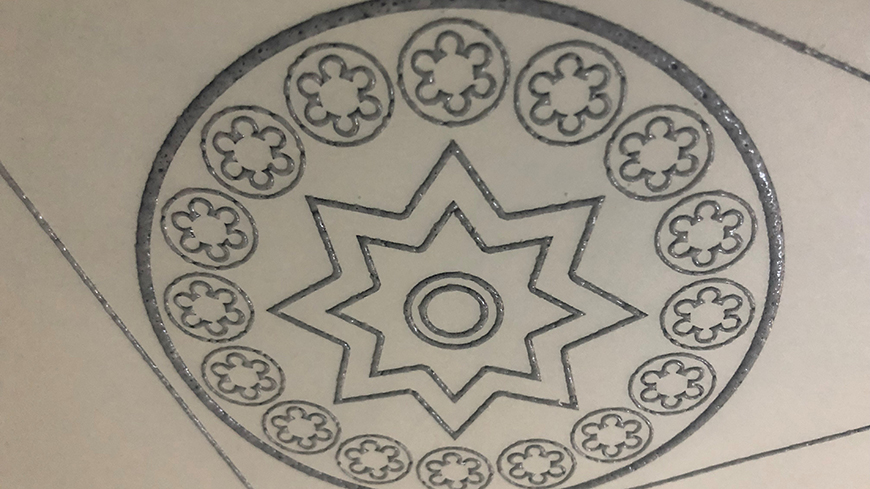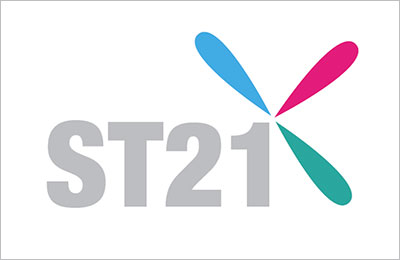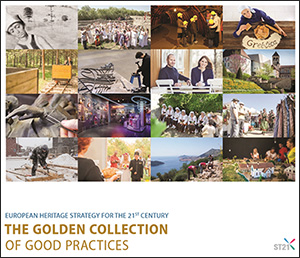Location of the initiative:

Relation to Strategy 21 Recommendations:
S2 - Make heritage more accessible
Time span of the initiative:
Start Date: 02.05.2018 / End Date: 31.10.2018
Motivation / Methodology
Since 2007, we have been working to prevent the exclusion of the blind people from cultural life. The initiative „100 audio descriptions of Monuments of History for the centenary of Poland regaining independence” was carried out in response to diagnosed social exclusion and low public awareness of the blind persons, as they have very limited access to the cultural heritage.
Blind people do not have access to visual information as they do not have access to support and assistance. According to our research, 46.2% of visually impaired who have no access to visual information do not visit museums nor monuments. Only 11% of museums and galleries in Poland offer audio descriptions of their exhibits.
The second group of participants in our initiative are young Poles who do not engage in the system of taking care of historical heritage. The youth in the vast majority believed that cultural heritage does not affect them. They do not identify themselves with historical heritage and declare lack of interest in it. So, our initiative was focused also on the awareness raising of young people, in order to increase the cultural capital of young Poles. Although young citizens are not interested in heritage, they had a lot of empathy and willingness to help the weaker and disabled.
We have involved 113 students from 5 schools from all over Poland as a volunteer to make descriptions (audio description) for the blind people of 91 important historical sites that have the presidential title of the Monument of History (among them are UNESCO World Heritage Sites). At the time 91 from 100 sites had received this title. They were called audio-volunteers to emphasize the uniqueness and innovative character of their work. Before describing heritage sites, we organized 2-day training for the volunteers on audio description rules and methods. The training was conducted by our specialists in audio description field. The trainings were attended also by Blind people who explained how to make descriptions readable to them. Preparing these audio descriptions was a process in which many groups of participants were actively involved: visually impaired, youth, teachers and audio description specialists.
113 audio-volunteers, with the support of audio description specialists, made 91 audio descriptions of Monuments of History sites. The audio descriptions were read by professional lectors and in the form of digital audio files published on the website www.ekiosk.defacto.org.pl/pomniki/. Online access to audio descriptions of Monuments of History is available for 2,000 blind people. These people used to have sight. After losing their sight they were excluded from social and cultural life. Now they work on returning to the civil activity.
We also prepared album of 91 Monuments of History, published as the audio files and printed in the Braille, depending on the needs. It also included tactile graphics of selected 12 sites. The album was sent to 1.150 people, mostly blind from birth, which so far have not often participated in cultural life. The initiative took into account the limitations as well as their needs.
It provided access to historical heritage and prevented exclusion from society. We used the Braille learned at school by most of them and led them through life. All materials, tactile graphics and CD`s have Braille labels.
Obstacles / Barriers
To enable visually impaired persons to learn about the cultural heritage of Poland, it is necessary to provide them information in two ways: by audio description and by tactile graphics. Such knowledge should be known by cultural institutions, non-governmental organizations and entities responsible for historical heritage.
Audio description can be made with the help of volunteers, just like in this initiative. The making of tactile graphics of historical heritage places are much complicated and more cost-intensive. One should make digital files of pictures of historical heritage places, print them in a tactile form, consult with a group of sightless consultants and apply the corrections they have submitted. These activities must be carried out several times before being accepted for implementation. Graphics for consultation can be printed in a cheaper but inconstant Braille print technology. Final tactile graphics should be printed in long lasting technology, such as thermography, which is much more expensive than Braille printing.
As part of the project, 24 tactile graphics for 12 Monuments of History sites were made. In order to remove barriers and offer effective but also comfortable access to information on historical heritage, no just 24 but 495 tactile graphics should be printed.
The initiative should not be an isolated attempt to make Polish historical heritage accessible to the visually impaired citizens. It should be continued from steady financing sources. In the current law, no European citizen should be discriminated because of disability. Cultural heritage should be accessible to all citizens. Cultural heritage is a treasure belonging to all of us.
Change / Impact
Thanks to the implementation of the project, the participants had their first opportunity to access 91 Monuments of History sites.
113 audio-volunteers, pupils from 5 schools from all over Poland, acquired the skill to make audio description. They had also raised their historical competences and knowledge about historical heritage. Volunteers got involved in helping people with disabilities, improving their civil competences. They have increased their knowledge about the importance and protection of historical heritage particularly important for Polish culture.
In order to precisely describe historical heritage places for visually impaired people, volunteers used the Polish language, in new ways, increasing the amount of native language skills. Participation in the project resulted in the promotion of historical heritage and knowledge on the subject among young people. This increase in the awareness of the social value of heritage and strengthened the social will to preserve heritage and use its values. The implementation of the project has increased the quality of life of individuals and communities of the visually impaired and has contributed to building a stronger civil society.
1.150 visually impaired people have learned about history, expanding their knowledge and awareness about historical heritage. Implementation of the project resulted in the activation and even rehabilitation of visually impaired people, encouraging them to travel and visit places of historical heritage. Historical heritage carries an extremely valuable message. They are not abstract works of art but deeply embedded in polish history, associated with specific events and people. Thanks to the knowledge of 91 historical heritage places, there was an increase in historical awareness, increased participation of blind people in civil life, increased interest and willingness to travel to learn about heritage. This enabled an increase in economic and social development.
Audio descriptions of 91 historical heritage places were made and prepared in files available for the blind, i.e. in Braille, audio files, text files. These objects have been made available to both - blind people in the legal sense as well as to people (mainly older) who face barriers to reaching and learning about historical objects.
24 tactile graphics of 12 historical heritage places have been made. The graphics were prepared by specialists based on documentation from the historical heritage register. Two tactile graphics were made for each of 12 historical heritage places: one showing the appearance of the monument (elevation) and the façade or particularly important architectural detail of the historical heritage. The tactile graphics were made with the technique of thermography allowing visually impaired people to return to learn graphics and check precise tactile details of the graphics of historical heritage.
Lessons learned
The initiative “100 audio description of a historical heritage places for the 100th anniversary of Poland “ was our first step towards enabling access to heritage for the visually impaired and involving pupils in this process from schools. The project showed that such action was much-needed. In 2018 the President of Poland announced 14 next historical heritage places. Audio descriptions for all historical heritage places in Poland should be prepared. Next, schools should be involved in audio-volunteering for the blind. 525 tactile graphics for 105 historical heritage places should be made. This is essential to enable the blind to get to know the Polish historical legacy and full participation in Polish public life.
Online resources
Contact information
Jerzy Myszak
Mazovian Association of Labour for Disabled persons “De Facto”
[email protected]
www.defacto.org.pl
Source of financing
Public financing
Financing details
Total cost: 42.049,03 PLN





